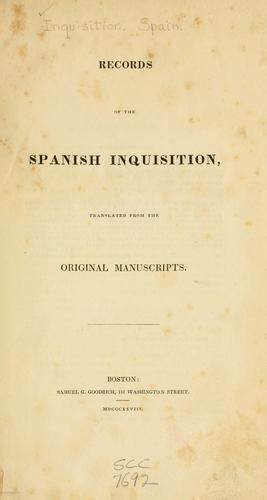How can I Prove Sephardic Ancestry?
In this post we will take a look at the Sephardic Jewish community, its history and the complicated nature of reclaiming your Sephardic heritage. You may have heard family stories that indicated Sephardic heritage or perhaps an AncestryDNA test suggested you may be part of this ethnic group.
AncestryDNA is Our Top Recommendation
After reviewing all of the top DNA products on the market, nothing comes close to AncestryDNA to help you discover your whole family story!
They give you so much more than any other family tree DNA kit, and let you connect to the places you're from in the world where your family story started, and even help you to discover living relatives you never knew you had!
For the most accurate family history research based on your DNA, sign up for AncestryDNA now!
Get AncestryDNA →History of Sephardic Jews
The term Sephardic Jews essentially to modern scholars translates as Hispanic Jews based on the fact that this faction of the Jewish faith comes from the Iberian peninsula, specifically Spain and Portugal. It is thought that there have been Jewish settlers in the region of the Iberian peninsula since before the Roman period.
The Sephardic Jews faced a great deal of strife in the region suffering persecution, exile and forced conversion to Catholicism over the centuries. It was in 1492 that things started to get really horrendous for those of the Jewish faith in Spain and Portugal.

Isabella I of Castile and Ferdinand II of Aragon in 1492 issued the Alhambra Decree. This new decree was intended to banish Jews from the respective monarchs' territories upon pain of death. Those who had already converted to Catholicism or were willing to do so were exempt from this decree. Others either had to flee or were prosecuted.
Some time later during the Spanish Inquisition 16th-17th centuries a fresh wave of migration left the Iberian Peninsula as again persecution intensified on the remaining Sephardic Jews. Many of those who fled the Inquisition found refuge in England thanks to Oliver Cromwell.
Why Is It Hard to Prove Sephardic Ancestry?
As you might imagine, centuries of forced expulsion, conversion and potential execution have been devastating to the Sephardic Jewish community. There are thousands of people living on the Iberian peninsula today who may have no idea that they have Jewish ancestry.
The need to abandon their faith in order to survive has meant that the family may have long ago forgotten their original roots. In the process of fleeing the persecution it would not be unusual for people to be born, married and die in different countries and be recorded under different names.
In terms of a record of a person's life the trail could be so confused as to be completely indecipherable. It is therefore not an easy task to prove Sephardic Jewish ancestry unless of course you were part of a community that held onto their faith throughout.
How to Prove Sephardic Ancestry
If you suspect a possible Sephardic Jewish ancestry in your family either based on family lore or DNA results then you have one first obvious step to take. If you have not already done so, build out your family tree and trace it as far back as possible.
It may be that you do not manage to find a geographic connection to Spain or Portugal but take particular note of the surnames that arise in your research. If there are any names that may be Spanish, Portuguese, Arabic or Hebrew sounding this may be where you need to focus your research.
This might not mean these ancestors were Sephardic Jews but they at least may come from the right part of the world to potentially find the answers you seek.
Those who come from Britain and may be descended from the Sephardic Jews who fled the Iberian Peninsula during the Spanish Inquisition might want to visit the London Metropolitan Archives (LMA). This is where a collection of the Spanish and Portuguese Jews Congregation of London can be located.
You do need to obtain special permission to view this archive and the records are in Portuguese so you either need to know this language or may need an interpreter's assistance.
Each country has its own records systems and the Sephardic Jews have had to find new homes throughout Europe over the centuries. It is advisable that you familiarize yourself with the availability of records in the country your suspected Jewish ancestors were living.
There may be local Jewish genealogy groups who have access to records who can help you with your research. Determining the history of the Sephardic Jewish communities in the region you are researching can be key to finding out where records may be found.
In London in 1657 one of the first tasks of Sephardic Jews when they arrived seeking sanctuary from the Inquisition was to establish a cemetery. Called The Velho, it was in use up until 1733 and the records can be found transcribed in volume six of “Miscellanies of the Jewish Historical Society of England (1962)” by RD Barnett.
The Velho was replaced by the Novo which operated from 1733 until 1913 and its records are found in volume four of “Bevis Marks Records.” As mentioned, all of the countries that took in populations of Sephardic Jews will likely have some record that may be available to research.
Records in Spain and Portugal
An obvious place to try and find lost Sephardic family records would potentially be Spain and Portugal. The place to start is to look at records from the Spanish Inquisition. Portugal has an almost complete and well indexed record of this era while Spain’s is more sparse and poorly indexed.

You will mostly be looking for trial records which can be brief or very extensive but are a real treasure trove of possible information.
The Complication With Names
Outside of Spain and Portugal Sephardic Jews would likely freely use their family names so their potential heritage would be more obvious. Those still remaining in Spain and Portugal would most often adopt Christian names in order to avoid persecution.
Additionally in Spain and Portugal it must be remembered that naming traditions called for two surnames together one from each parent, In Spain the father's name was first but in Portugal the mother's name took precedence.
Can DNA Determine Sephardic Ancestry?
Sites like AncestryDNA and Myheritage do include Sephardic Jewish among their DNA regions and these may appear in your ethnicity estimate reports. As this is a tricky situation due to the historic movements of the Sephardic people these results may be questionable.
A more accurate test may be Y-DNA testing which is a variety of DNA passed father to son largely unchanged for generations. Certain haplogroups are associated with Sephardic ancestry so if these were to appear as your haplogroup this may be an indication of Sephardic heritage.
As it is a male specific DNA, Y-DNA tests only work for males. This does not mean females cannot benefit as they can ask a male sibling, father or father's male siblings to test in their place. They will have inherited the direct paternal line Y-DNA.
Conclusion
The history of Sephardic Jews is a very sad and complicated one and has led to so many losing their heritage through fear. It is not easy to trace this heritage especially if your family abandoned the faith centuries ago.
There are however ways to seek the information you need as long as you know where to look. A few ideas were mentioned in this post but depending where your suspected Sephardic Ancestors came from you may want to research what is available to you in that region.
Link To or Reference This Page
We spent a lot of time downloading, cleaning, merging, and formatting the data that is shown on the site.
If you found the data or information on this page useful in your research, please use the tool below to properly cite or reference Name Census as the source. We appreciate your support!
-
<a href="https://namecensus.com/blog/how-can-i-prove-sephardic-ancestry/">How can I Prove Sephardic Ancestry?</a>
-
"How can I Prove Sephardic Ancestry?". NameCensus.com. Accessed on April 27, 2024. https://namecensus.com/blog/how-can-i-prove-sephardic-ancestry/.
-
"How can I Prove Sephardic Ancestry?". NameCensus.com, https://namecensus.com/blog/how-can-i-prove-sephardic-ancestry/. Accessed 27 April, 2024
-
How can I Prove Sephardic Ancestry?. NameCensus.com. Retrieved from https://namecensus.com/blog/how-can-i-prove-sephardic-ancestry/.
